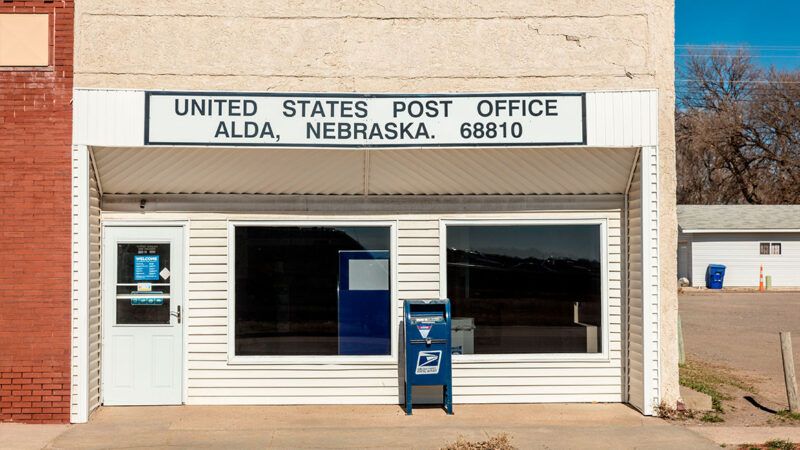The Post Office Pension Ponzi Scheme
The USPS has overpromised and undersaved for its employees' retirements—all while losing nearly $9.2 billion last year.

The coronavirus pandemic created all sorts of new problems for the U.S. Postal Service (USPS), but the most serious financial issue the agency faces was a crisis long before anyone had heard of COVID-19—and it won't be solved with a vaccine.
Like many other government entities, the USPS has overpromised and undersaved for its employees' retirements. The pension system for retired postal workers has a $50 billion unfunded liability—that's an accounting term for the gap between what actuaries expect the system to owe current workers and retirees for the rest of their lives and the revenue it's expected to take in from paychecks and investment earnings. Meanwhile, the USPS fund that's supposed to cover health care expenses for retired workers is facing a $70 billion unfunded liability, and it has less than half the assets necessary to cover expected future costs.
With each passing year, the situation grows worse. Even though the Postal Service reported a $2 billion uptick in operating revenue during the fiscal year that ended on September 30, 2020, expenses (largely due to the pension debt) increased faster. Overall, the USPS lost nearly $9.2 billion last year, up from about $8.8 billion of red ink the year before. Since 2007, the USPS has reported more than $86 billion in losses.
Retirement costs are also the main reason the Government Accountability Office declared, in a May 2020 report relying on data gathered before the pandemic hit, that the Postal Service's current business model was "not financially sustainable."
During the kerfuffle over mail-in balloting prior to the 2020 presidential election, Congress briefly appeared to care about the USPS' problems. Democrats in the House pushed for the inclusion of a rather arbitrary $25 billion bailout for the USPS in several iterations of COVID-19 relief packages, but a veto threat from then–President Donald Trump sunk those plans. Instead, Congress extended a $10 billion loan to the USPS as part of the relief package passed in December.
On the political left, it's become somewhat popular to claim that the USPS' pension mess is the result of unique rules that do not apply to other businesses or government agencies. In a viral tweet from 2019, for example, Rep. Alexandria Ocasio-Cortez (D–N.Y.) claimed that USPS being required to "prefund pensions decades out (which makes NO sense & no solvent biz does)" was the root of the problem.
This is mostly untrue. All private pension systems must prefund future benefits. Indeed, this is a wise thing for businesses to do if they wish to remain solvent. The unique situation for the USPS is that those requirements also apply to its retiree health care benefit plan. Private sector companies aren't required to do that because they could, theoretically, eliminate those benefits at any time. The USPS, however, would not be able to do that without an act of Congress—and so prefunding is not only financially sound, but politically prudent.
Despite those obvious long-term drawbacks, the American Postal Workers Union and at least 270 members of Congress support a plan to switch the USPS to a so-called "pay-as-you-go" pension system. If passed, the USPS Fairness Act would allow the USPS to use current workers' contributions to pay benefits to current retirees, rather than requiring that those dollars go into an investment fund to cover the cost of the current workers' eventual retirement.
Setting up what amounts to a Ponzi scheme instead of addressing structural issues in the current retirement system is an easy way to make the current mess go away, but it will certainly create bigger problems later on.
